


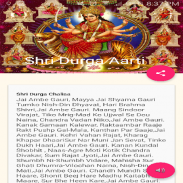
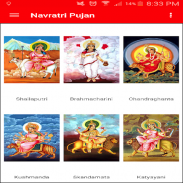
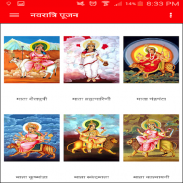
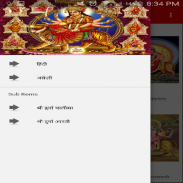
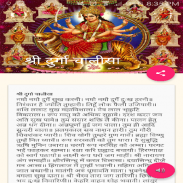
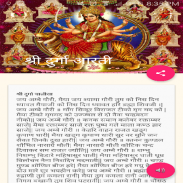

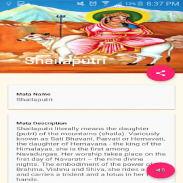
Navratri Pujan Vidhi Vidhan

Mô tả của Navratri Pujan Vidhi Vidhan
Navratri is a Hindu festival of worship and dance. The word Navratri literally means nine nights in Sanskrit; Nava meaning Nine and Ratri meaning nights. During these nine nights and ten days, nine forms of shakti/Devi i.e. female divinity are worshipped.
The nine night’s festival of Navratri begins on the first day of Ashwina of the bright fortnight. The festival comes to an end on the tenth day of Vjay Dashmi or Dussehra, when the idols of the Goddess Shakti are immersed in the river. Dussehra, meaning ‘ten days’, becomes dasara in popular parlance. The Navratri festival or ‘nine day festival’ becomes ‘ten day festival’ with the addition of the last day, Vijayadashami which is its culmination. On all these ten days, the various forms of Mother Mahisasura-mardini (Durga) are worshipped with fervour and devotion.
The nine nights are dedicated to the three main goddesses of Hinduism – Parvati, Lakshmi and Saraswati. Navratri is separated into sets of three days. First three days of Navratri are dedicated to Goddess Durga, the Goddess of power and energy. Next three days of Navratri are dedicated to Goddess Lakshmi, the Goddess of wealth and prosperity. The final three days belong to Goddess Saraswati who is worshipped to acquire the spiritual knowledge.
Goddess Durga is also worshipped under nine different names for the nine days in Navratri. Every day, she assumes a new character, a new look and a new duty. These nine forms of manifestation are Shailaputri, Brahmachartini, Chandraghanta, Kushmanda, Skandamaata, Kaatyayani, Kaalratri, Mahagauri and Siddhidaatri. For the initial six days Puja celebrations are limited to home. The celebrations acquire a festive form since the seventh day when the festivities of Navratri surround the atmosphere.
Navratri là một lễ hội Hindu tôn thờ và khiêu vũ. Từ Navratri nghĩa đen có nghĩa là chín đêm trong tiếng Phạn; Nava nghĩa Nine và Ratri nghĩa đêm. Trong những chín đêm và mười ngày, chín hình thức shakti / Devi tức là nữ thần được thờ.
Lễ hội chín đêm của Navratri bắt đầu vào ngày đầu tiên của Ashwina của hai tuần tươi sáng. Lễ hội nói đến một kết thúc vào ngày thứ mười của Vjay Dashmi hoặc Dussehra, khi các thần tượng của nữ thần Shakti được đắm mình trong dòng sông. Dussehra, có nghĩa là "mười ngày", trở thành dasara theo cách nói phổ biến. Lễ hội Navratri hoặc 'ngày lễ hội chín' trở thành 'ngày hội mười' với sự bổ sung của ngày cuối cùng, Vijayadashami đó là đỉnh cao của nó. Trên tất cả các mười ngày, các hình thức khác nhau của Mẹ Mahisasura-Mardini (Durga) được thờ với lòng nhiệt thành và tận tâm.
Chín đêm được dành riêng cho ba nữ thần chính của Ấn Độ giáo - Parvati, Lakshmi và Saraswati. Navratri được tách ra thành bộ ba ngày. Đầu tiên ba ngày Navratri được dành riêng cho nữ thần Durga, Nữ thần của sức mạnh và năng lượng. Tiếp theo ba ngày Navratri được dành riêng cho nữ thần Lakshmi, nữ thần của sự giàu có và thịnh vượng. Ba ngày cuối cùng thuộc về nữ thần Saraswati người được tôn thờ để có được những kiến thức tâm linh.
Nữ thần Durga cũng được thờ dưới chín tên gọi khác nhau trong chín ngày trong Navratri. Mỗi ngày, cô giả định một nhân vật mới, một cái nhìn mới và một nhiệm vụ mới. Những chín hình thức biểu hiện là Shailaputri, Brahmachartini, Chandraghanta, Kushmanda, Skandamaata, Kaatyayani, Kaalratri, Mahagauri và Siddhidaatri. Trong sáu ngày đầu Puja lễ kỷ niệm được giới hạn đến nhà. Các lễ kỷ niệm có được một hình thức lễ hội kể từ ngày thứ bảy khi các lễ hội của Navratri bao quanh khí quyển.

























